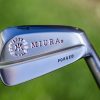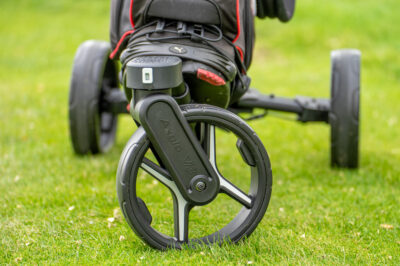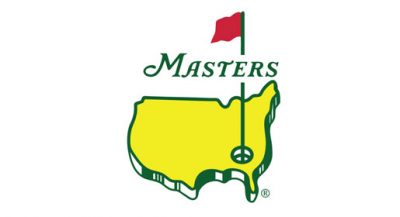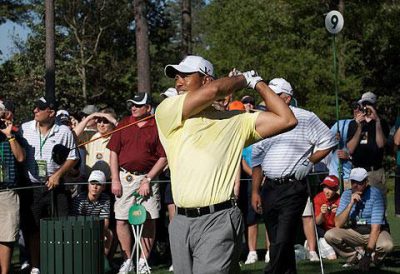Acushnet wins jury verdict in Callaway golf ball patent dispute
Categories: Golf Balls • Golf Gear
Tags: Callaway • ProV1 • Titileist
Acushnet (parent company of Titleist) has won a jury verdict against Callaway regarding four patents which Callaway owned related to the previous generation of Pro V1 golf balls. I wonder if this means Titleist will alter the next generation ball to utilize that technology again, now that they’ve been found not to be infringing on Callaway’s patents? I noticed quite a difference in the balls from the two different years, not in performance per se, but in the feel, durability and tackiness of the ball.
Official Acushnet press release below
ProV1 scammers busted
Categories: Golf Balls • Golf Gear • Miscellaneous
Tags: Golf Balls • ProV1 • Titleist
Two crooks (alleged) were busted for selling Titleist ProV1 golf balls for cheap, but never delivering the product. They also would set up accounts, purchase golf balls from shops and never pay for them. Total scammed was around $400,000.
ProV1’s aren’t cheap. If some company says they can sell you a brand new dozen of them for $25, back away from your wallet. If it sounds too good to be true, it probably is.
Full press release below.
Review: 2009 Titleist ProV1 Golf Ball
Categories: Golf Balls • Golf Equipment • Golf Gear • Reviews
Tags: Golf Balls • Golf Equipment • ProV1 • Titleist
 Assignment: Play the new 2009 Titleist Pro V1 golf ball and write about it. I think I can handle that, and it won’t suck.
Assignment: Play the new 2009 Titleist Pro V1 golf ball and write about it. I think I can handle that, and it won’t suck.
Technology
Like the 2009 ProV1x, which I reviewed in this article, the new Titleist ProV1 has had some changes under the hood. Actually many of the changes are outside the hood in the cover of the golf ball. Though they’ve been calling the cover “Urethane Elastomer” for some years now, it is definitely different than previous year’s models. Is it better or worse? We’ll see.
Three pieces/layers
The Pro V1 is a three piece/layer ball.
The first layer, in the center of the ball is called the core. The core is 1.55 inches in diameter and made of a material called Polybutadiene. Polybutadiene is a highly durable synthetic rubber commonly used for tires or coating electronic assemblies.
The core provides the general (soft) feel of this golf ball, as well as contributing to the distance the ball will travel.

Layer two is called the casing. The casing is .035 inches thick and made of Ionomer, a highly durable plastic/rubber.
The casing is what I’d call a “scoring” layer, providing spin and control on approach shots.
The third layer is the cover, the white part with the dimples. The cover is made of Urethane Elastomer and is .030 inches thick. The cover has five different types of dimples, of which there is a total of 392. The dimples are arranged in a “icosahedral” pattern.
The dimples provide lift and keep the ball in the air and flying as straight as possible.
The cover is also a “scoring” layer, providing spin and control. More of the short game spin and control is in the cover than in the casing.
How to identify the 2009 model Pro V1 versus older models
You’ve knocked your junk golf ball in the bushes and while searching for said junker, you’ve found a ProV1. Congratulations on the upgrade. But how do you know what model or year your new ProV1 is?
![]() Every time Titleist comes out with a new model they change the text or decoration around the “Pro V1.” The current model’s decoration can be seen in the image to the right.
Every time Titleist comes out with a new model they change the text or decoration around the “Pro V1.” The current model’s decoration can be seen in the image to the right.
The 2009 model: < . – Pro V1 – . >
The 2008 model: < – Pro V1 – >
What is different from the 2008 models of the Pro V1?
The major change to this year’s model is the cover. It feels more “rubbery.”
The new cover is more durable than the older model Pro V1’s. That being said, this is a performance ball with a very thin cover which still chews up.
The way this ball chews up is a bit different than previous models. Rather than shaving off parts of the cover completely, the grooves of the club can cut gashes into the surface. Most of the time these are hardly visible, but some crisp wedge shots with square grooves can do some major damage. That damage could be enough to effect the performance of the ball in flight or on the putting green.
 No more seam
No more seam
Another difference in the new model is the lack of a seam. In the “old days” we used to line up the seam on Pro V1’s and get more distance. I also liked to line the seam up and roll my putts with the line.
Staggered wave parting line (pictured right, accenting the wave) technology gets rid of the seam and covers more area of the ball with dimples. Dimples give the ball the proper “lift” and help the ball fly in the air better.
On the course
Distance
The first hole I played with the new ProV1 was at my airport course. That hole is 393 yards from the blue tees, the tees I was playing that day. I hit a very solid drive, which drew from the center to the left side of the fairway. The pin was in the back of the green and when I hit it with my laser rangefinder, I was 63 yards away! Wait a sec let me get out my calculator. Back pin means add 10 yards, so the hole was playing 403. I’m 63 yards out. 403-63=340. I just hit the ProV1 (regular flavor), the ball touted for spin and not necessarily distance, 340 yards? Wow.
Since that day I’ve confirmed the new ProV1 is noticeably longer than the old one for my swing. In fact it may be longer for me than the new ProV1x, which really shouldn’t be the case.
Feel
The feel of this ball is as good as it has ever been for my painful golfer’s elbow granny swing. The ball compresses well on the driver and feels great on iron shots. I really like the feel of full wedges from say 80-140 yards out and I don’t get super spin, which is good. The ball drops and doesn’t spin back too far.
Short game
Here’s where my confusion about the ProV1 and ProV1x gets deeper. I get less spin with this year’s model on short game shots than models past. The V1 is the “spin” ball and the V1x is the distance ball, right? But in short game situations, I get more spin with the X than I do with the regular flavor. Just to be clear, I’m not saying the regular flavor doesn’t spin. It has plenty of spin and control around the greens and I’m very confident with my short game and a ProV1 at greenside.
Putting
The ProV1 rolls great on the greens. I miss having a seam to line up, but I use their “AIM” technology to line up my putts. Really, is painting arrows on a golf ball “technology”??? I digress.
My distance control with the V1 is as good as any golf ball.
Critiques
Like my main critique was for the ProV1x, the cover of the ProV1 can have some gouging issues.
Wedges and shorter irons with clean (especially square) grooves can really carve up the surface of this ball. Some very crisp full wedges can slice it up enough for me to want to take it out of play for fear of missing putts or having directional issues in the air.
Conclusion
The new ProV1 is a great golf ball and I’m confident in its performance when I have it in play. At $58 a dozen I have to play them until I lose them so I deal with the occasional cover damage.
I wonder if Titleist got the ProV1 and ProV1x labels switched at the factory though. I get more spin with the V1x and more distance with the V1! Yet another mystery to my golf game.













